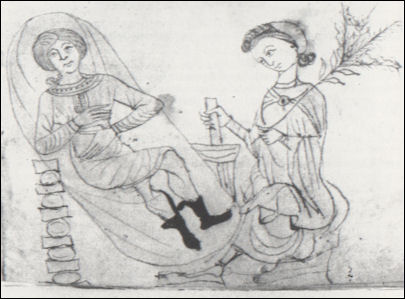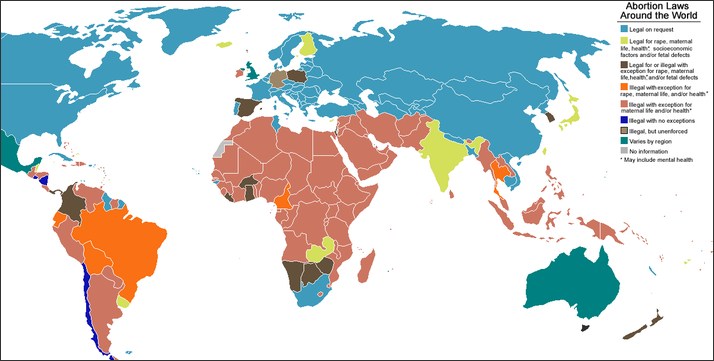BIRTH CONTROL IN THE DEVELOPING WORLD (THIRD WORLD)

Birth control pills The Economist reported in 2011: On some estimates, 200 million women round the world — including a quarter of African women — want contraceptives and cannot get them. A quarter of pregnancies are unplanned. In our view, parents ought to decide how many children to bring into the world and when — not the state, or a church, or pushy grandparents. Note, though, that this is not an argument about the global environment but individual well-being. Moreover, family planning appears to do little directly to control the size of families: some studies have shown no impact at all; others only a modest extra one. Encouraging smaller families in the highest-fertility places would still be worth doing. It might boost the economy and reduce the pressure of population in some fragile places. But the benefits would probably be modest. And they would be no substitute for other sensible environmental policies, such as a carbon tax. [Source: The Economist, October 22, 2011]
After years of looking upon Western attitudes towards birth control as immoral and conspiratorial, many developing countries have began making contraceptives widely available. Family planning clinics have opened and signs and public campaigns have sprung in villages encouraging couples to have two or less children.
A study by APROFAM in Latin America conducted in the 1980s found that 25 percent of women of child-bearing age practiced birth control, abortion accounted for 10 to 50 percent of maternal deaths, and as many as 40 percent of the women in some towns had been surgically sterilized, many at the time of their last birth.
Birth rates have also been significantly reduced by making contraceptives widely available. The number of women using contraceptives has risen more than 50 percent in some places. The United Nations Population Fund has reported that global warming could be improved and population growth could be reduced if condoms were given out free and family planning advice was made available.
Many government run aggressive family-planning radio and television campaigns with sports stars and actors. Midwives are crediting with reducing births. Not only do they help deliver children but they also give family planing lectures and dispense birth control devices.
Traditional Birth Control Methods and Contraceptives
Angkor Wat abortion, AD1150 The easiest method of birth control in some societies has been for women to prolong the length of time in which they nurse their children. This practice delays the onset of menstruation and can postpone the possibility of pregnancy up to four years.
Unconventional birth control methods over the years in some parts of the world have included avoiding deep penetration when menstruation was "ending and abating" (the time villagers thought a woman was most fertile); sneezing and drinking something cold after having sex; wiping the cervix with a lock of fine wool or smearing it with salves and oils made from aged olive oil, honey, cedar resin, white lead and balsam tree oil. Before intercourse women tried applying spermicidal oil from juniper trees or blocking their cervix with a block of wood. Women also ate dates and pomegranates to avoid pregnancy (modern studies have shown that the fertility of rats decreases when they ingest these foods).
Contraceptives options include IUDs (invented in 1909), the pill, male and female sterilizations, diaphragms, condoms, and Norplants (contraceptive implants). Many women in the developing world opt for an IUD or sterilization because they are simplest and cheapest methods. The most common birth control method in many places is female sterilization. Women generally have the operation done after their second child when they are in their early thirties.
About 70 percent of women in a long term relationship use some kind of contraceptive. Of these 19 percent use traditional methods, 17 percent use the pill, 14 percent use condoms, 9 percent use female sterilization, and 11 percent use other. Contraceptive injections cost from 50 cents to $2 and last for three months. Basic IUD are often free. Better IUDs cost around 50 cents.
Men and Other Obstacles to Family Planning

abortion in medieval Europe Family planning programs have been hampered by factors such as illiteracy, infant mortality (which makes women want more children), low status of women, conflicts between ethnic and religious groups and poverty. Village women are often suspicious of birth control crusaders.
One of the biggest obstacles for the family planning organizations is overcoming the notion among men in developing countries that having a lot of children is an indication of status, virility and success. Some men are against contraception because they believe that fear of pregnancy will keep their wives faithful, that family planning is against all child births, and that sterilization will make them impotent. Women have traditionally gone along with the status quo even when they didn't want more children because they were afraid to speak up to their men.
Many husbands forbid their wives from practicing birth control. Women who don't want more babies often have to visit birth control clinics on the sly to get birth control pills and then take the birth control pills in secret. Men are often most adverse to using methods that involve them: condoms and male sterilization.
Women, Education and New Birth Control Strategies
One factor that seems to make the greatest contribution towards lowering birth rates is increasing the health and status of women. Studies have shown that healthy women with a education and jobs are less likely to begin having children early than unhealthy, uneducated women without jobs. In Senegal, for example, women with no education have an average of seven children while those with 10 years of school have 3.6 children.
In recent years, the focus of population control has switched from promoting birth control to providing educational, political and economic opportunities to women as well as giving family planning advise. To fight overpopulation, family planning organizations are urging developing world governments to give women jobs and access to credit and land ownership.
Studies have also shown that when health services are improved for women — as well as for men and children — the birth rate goes down. Puberty tends to start earlier as countries develop and children's diets improve; in China, the starting age has fallen from about 14.5 in the 1970s to 12 1/2 years old. Meanwhile, the average marriage age has edged up, from 20 in the 1970s to 22 now, extending the time that many young people can be sexually active but unmarried. Li Shuzhuo, a demographer at the Institute for Population and Development Studies in Xian, says it is clear that there has been a big shift from post-marriage to pre-marriage abortions. [Source: Alexa Olesen Associated Press , January 10, 2011]
Abortion and Infanticide in the Developing World
It is difficult to estimate the abortion rate in most developing countries because most women have them done quietly and few countries keep statistic on how many are performed. The post-abortion pill RUI 480 is available some countries.
Traditional abortion methods have included drinking poison that induced abortion, tying a tight cloth around the woman's belly, vigorous massages, exposure to extremes of hot and cold, blows to the abdomen and getting someone to jump up and on a woman's stomach.
In some places unwanted children — particularly girls — are gotten rid of through neglect, strangling, drowning, exposure or being dashed against a rock.
Many young children mysteriously disappear or are never to born to women who are mysteriously not pregnant. Handicapped children and unwanted girls are sometimes smothered to death with a pillow by old women hired to do the job, or simply left in the bush unattended. Most deaths result from neglect rather than murder. Girls often receive less food and health care than their brothers and are more likely to die from of preventable diseases than boys.

Abortion laws worldwide
Preference for Boys in the Developing World
In many countries there are more males than females even though women usually live longer. The high number of men is probably explained by the fact that boys in poor parts of the world are more likely to receive better medical care between the ages of one and five than girls because sons are more sought after than daughters.
In much of the developing world boys are favored over girls. Celebrations are often held for the birth of a son but not for the birth of a girl. Women with no sons are disappointed when they give birth to a daughter and relieved when they give birth to a son. If a woman gives to two or three daughters she often feels that she let her husband's family down.
Boys are generally favored because they look after property, inherit land, have more opportunities to get ahead in life than daughters, care for parents when they get old and performs important ceremonial duties when the parents die. In many places, there is no universal, government-sponsored social security and boys are regarded as kind of pension system.
The preference for boys is also tied up in traditional belief that male heirs are necessary to carry on the family name and take care of the family spirits so they do not wander the earth in the afterlife as hungry ghosts.
Girls, on the other hand, have to give away any property they possess to their husband and are not supposed to take care of their parents in old age. A daughter’s responsibility to her family ends when she gets married. She moves in with her husband and become part of her husband's family and helps care for them.
Anthropologist have long wondered why the majority of societies prefer men over women when women do most of the work, produce babies, and are more necessary for reproduction. Columbia anthropologist Marvin Harris argues the preference for males dates back to a time when large numbers of males were needed for the military.
Image Sources: Wikimedia Commons
Text Sources: New York Times, Washington Post, Los Angeles Times, Times of London, Yomiuri Shimbun, The Guardian, National Geographic, The New Yorker, Time, Newsweek, Reuters, AP, Lonely Planet Guides, Compton’s Encyclopedia and various books and other publications.
Last updated January 2012

